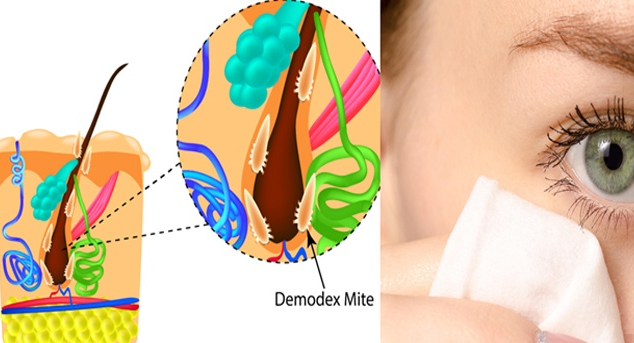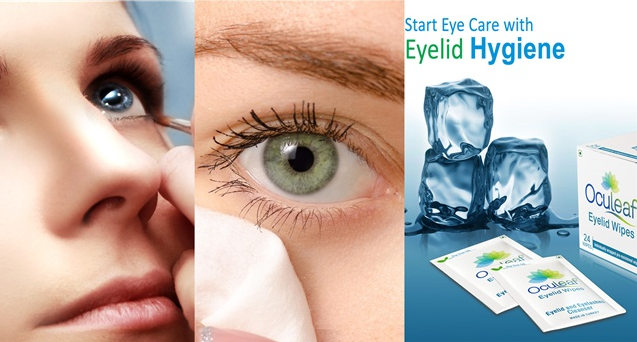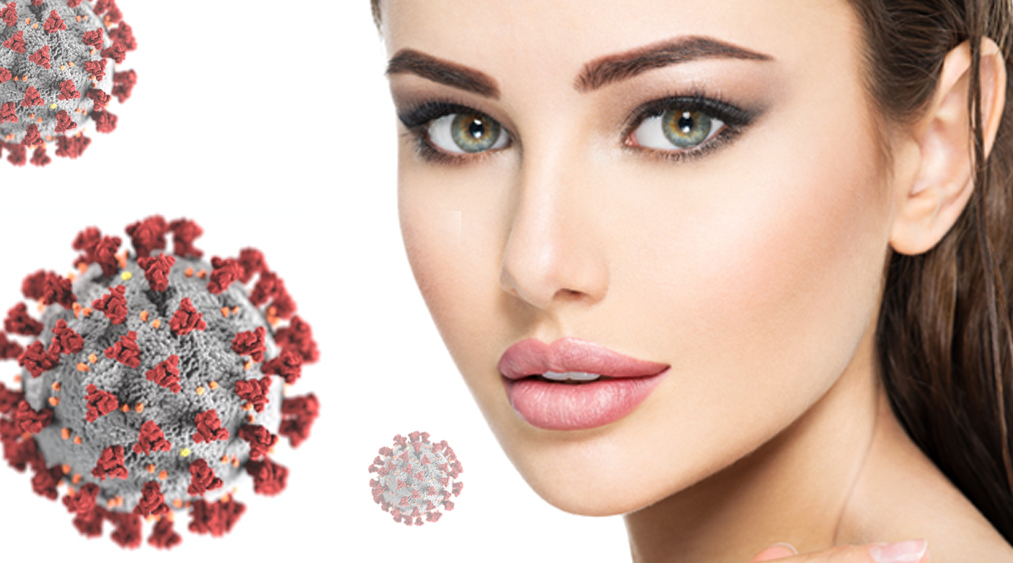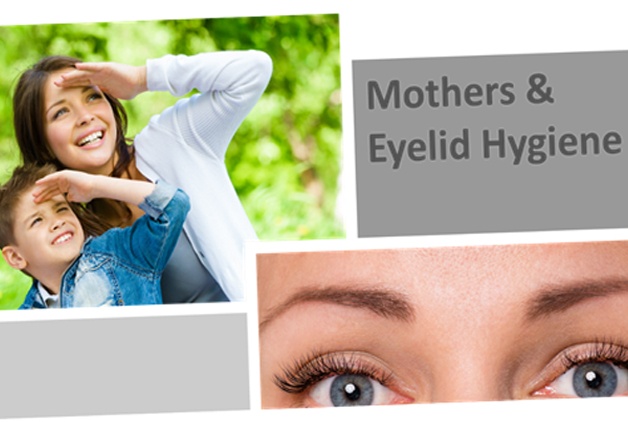
Are your eyes red, watering and itching? You may feel there is something stuck in your eyes, have sticky discharge and inflammation. You are facing constant discomfort, even though you may have reduced your work on the screen and resting your eyes. Or, you may suddenly be facing an outbreak of acne and there is just no explanation for the ugly outbursts on your face. The reason could be Demodex mites – these are microscopic mites which reside on your body, mainly in the eyelids, face, forehead and nose.
These mites might have made a comfortable home in your eyelashes/eyes, completely unknown to you. They also crawl out at nighttime and run amok over your face, causing pimples, and other skin problems such as rosacea. So how did these mites get inside your eyes and how do you get rid of them?
How do Demodex mites get inside the eyes?
You’d be surprised to know that most people on the planet already have Demodex mites on the body, especially on the eyelash follicles and meibomian glands. Sometimes, Demodex spreads through the dust particles which contain the eggs of Demodex. The ectoparasites or eight legged bugs can be controlled with regular eye hygiene.
When these mites, which feed on dead skin cells, multiply, they cause immense discomfort, and have been found to be the contributing factor in aggravating eye diseases/disorders such as conjunctivitis, blepharitis etc. Out of 62 species of Demodex mites, only two species are found on us – the Demodex folliculorum, and the Demodex brevis.
Is Demodex contagious?
As these mites have the capacity to spread through contact, they are contagious. So, if anyone in your family has been found to have eye problems because of Demodex, then ideally the whole family should be checked and started on a daily eyelid cleaning regime. You should also wash the sheets, towels, pillow covers etc. in hot water to get rid of any larvae.
You should also never share any eye makeup with anyone. Demodex mites can spread through eyelash brushes, mascara, eye liner as well as other cosmetics or cosmetic tools which are used on the eyelashes.
What is the life cycle of Demodex mites?
Demodex mites’ life cycle is between 2-3 weeks. A female mite lays up to 20 eggs in one single eyelash follicle. These eggs turn into a mite. Adult male mites leave the eyelash follicle to look for a mate, and walk approx 10 mm/hour, tending to be much more active in darkness. Adult females remain in the follicle.
Signs of Demodex infestation
Apart from inflammation, itching, tearing of the eyes, burning sensation, blurred vision and matted eyelashes, a sign of Demodex is cylindrical dandruff on the lashes, which is visible under a microscope. This dandruff is one of the common signs of Demodex. The dandruff is considered to be produced when the Demodex mites’ claws scrape around in the eyelash follicles.
Another tell-tale sign of Demodex is that the lashes are very brittle. You may have eyebrow itching too, in the mornings, foreign body sensation which seems to originate underneath the lids. Also, Demodex occurrence has been found to increase with age, i.e. the older you get the more chances you have of developing a Demodex infestation.
How to manage Demodex infestation?
Demodex can be controlled/managed with maintaining eye hygiene with eyelash wipes and eye shampoos which have 2% Tea Tree Oil. Such as Oculeaf Eyelid Wipes and Oculeaf Soft Eyelid Cleanser contain, in addition to Tea Tree Oil, vitamin E, Aloe D-Panthenol, and does not contain any SLS, parabens and alcohol. These products are recommended as they are soft and gentle on the lashes and skin of the face.
Tea Tree Oil (TTO) is considered to the best to combat Demodex as it has an ingredient terpinen-4-ol. Many studies have proven the efficacy of TTO to manage Demodex infestation, prevent laying of eggs, destroy larvae, and get relief. Besides, a daily eyelash cleaning regime will keep you and your family safe from other eye infections as well.
How to prevent Demodex infestation?
Once your doctor diagnoses you as having Demodex infestation, then you have to follow his advice and take the medication and other precautions. Wash the face twice every day with Oculeaf Cleanser, cleaning your eye area, and if you use eye makeup, throw out all the earlier eye makeup and brushes. Do not share from others and do not share your makeup with others.
When you have excessive watering of the eyes, itching of eyebrows and eyes, red eyes, eye pain, aggravated eczema or rosacea– it is time to visit your doctor. Otherwise, Demodex has been known to cause red eye, dry eye and other infections. Control the mites embedded in the eyes with a healthy eye cleansing routine and regain eye health.





